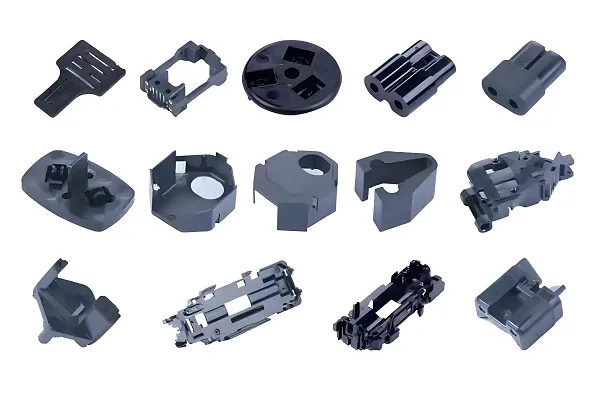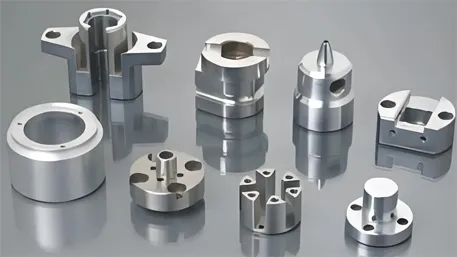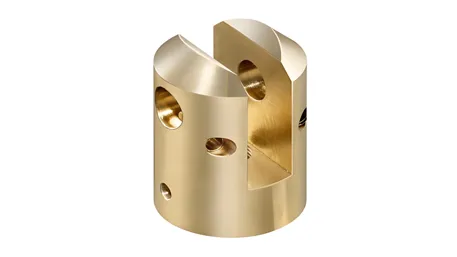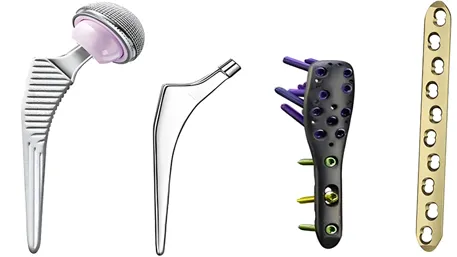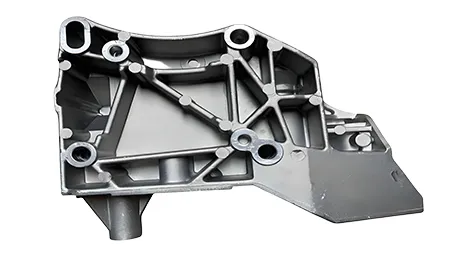In the trend of the automotive manufacturing industry’s pursuit of lightweight, safety, and reliability, die – castings have become a crucial manufacturing method for core components such as the vehicle body structure and power system. Traditional standardized die – castings struggle to meet the complex working conditions and high – performance requirements of automobiles. However, custom – made automotive die – castings, through data – driven design, precision die – casting processes, and strict quality control, achieve a leap from “basic manufacturing” to “performance optimization”. The following will analyze how custom – made automotive die – castings enhance the overall performance of automobiles from aspects such as customization advantages and core processes.
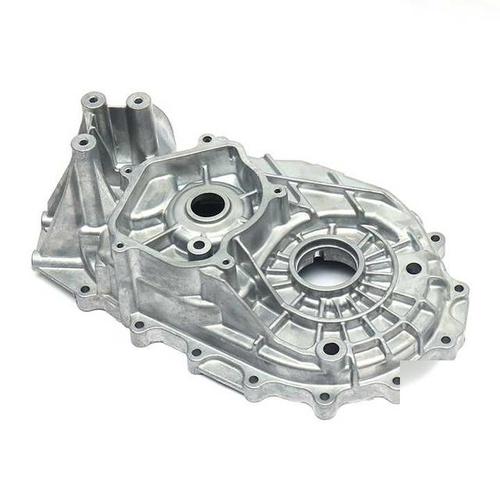
I. Why Can’t Standardized Die – castings Meet the Needs of Automotive Manufacturing?
Q&A: What are the core advantages of custom – made automotive die – castings?
Standardized die – castings have three significant problems in automotive applications:
Poor performance adaptability: General – purpose die – castings are not designed for the working conditions of different automotive components. For example, suspension parts are prone to fatigue fracture under dynamic loads. The tensile strength of traditional die – castings fluctuates by more than ±15MPa, failing to meet automotive safety standards.
Insufficient dimensional accuracy: The limitations of mold accuracy and processes lead to large tolerances (±0.15mm) in hole positions and assembly surfaces, affecting the precise assembly between components and increasing the risks of abnormal noises and vibrations in the vehicle.
Limited lightweight effect: The lack of optimized structural design makes it impossible to achieve thin – walled and hollow structures, resulting in components weighing 10% – 15% more than the ideal value, which is not conducive to automotive energy conservation and emission reduction.
Custom – made automotive die – castings, on the other hand, focus on “precisely matching automotive needs”:
Full – condition performance optimization:
Vehicle body structural parts: Through topological optimization design and the use of high – strength aluminum alloy materials, the tensile strength of A – pillar die – castings can reach over 400MPa, and the crash energy absorption is increased by 25%, meeting strict crash safety regulations.
Power system components: For the high – temperature and high – pressure environment of the engine, custom – made die – castings adopt special heat – treatment processes, maintaining over 90% of their mechanical properties at 200°C to ensure transmission stability.
Data – driven precise design: Combining automotive dynamics simulation data, the wall thickness (1.2 – 3mm), rib layout, and fillet radius (R0.5 – 2mm) of die – castings are accurately calculated, increasing the stress distribution uniformity by 30% and reducing the cracking risk.
Q&A: What are the core advantages of custom – made automotive die – castings?
Standardized die – castings have three significant problems in automotive applications:
Poor performance adaptability: General – purpose die – castings are not designed for the working conditions of different automotive components. For example, suspension parts are prone to fatigue fracture under dynamic loads. The tensile strength of traditional die – castings fluctuates by more than ±15MPa, failing to meet automotive safety standards.
Insufficient dimensional accuracy: The limitations of mold accuracy and processes lead to large tolerances (±0.15mm) in hole positions and assembly surfaces, affecting the precise assembly between components and increasing the risks of abnormal noises and vibrations in the vehicle.
Limited lightweight effect: The lack of optimized structural design makes it impossible to achieve thin – walled and hollow structures, resulting in components weighing 10% – 15% more than the ideal value, which is not conducive to automotive energy conservation and emission reduction.
Custom – made automotive die – castings, on the other hand, focus on “precisely matching automotive needs”:
Full – condition performance optimization:
Vehicle body structural parts: Through topological optimization design and the use of high – strength aluminum alloy materials, the tensile strength of A – pillar die – castings can reach over 400MPa, and the crash energy absorption is increased by 25%, meeting strict crash safety regulations.
Power system components: For the high – temperature and high – pressure environment of the engine, custom – made die – castings adopt special heat – treatment processes, maintaining over 90% of their mechanical properties at 200°C to ensure transmission stability.
Data – driven precise design: Combining automotive dynamics simulation data, the wall thickness (1.2 – 3mm), rib layout, and fillet radius (R0.5 – 2mm) of die – castings are accurately calculated, increasing the stress distribution uniformity by 30% and reducing the cracking risk.
II. How Do the Core Processes of Custom – made Automotive Die – castings Achieve Performance Breakthroughs?
- Digital Design and Simulation Optimization
Multi – physical – field coupling simulation: Using software such as Altair and ANSYS to simulate the performance of die – castings under multiple working conditions such as collisions, vibrations, and high temperatures, optimizing the structural design and reducing material waste by 15% – 20%.
Parametric mold design: Optimizing the gate position and cooling water channel layout through mold flow analysis (Moldflow), shortening the filling time to 0.03 – 0.08 seconds, reducing the number of mold trial – and – error attempts by 50%, and shortening the development cycle by 30%. - Precision Die – casting Process Innovations
Vacuum die – casting technology: Controlling the cavity vacuum degree to < 5kPa, effectively reducing the internal porosity of die – castings (< 0.3%), improving airtightness and fatigue life, and meeting the requirements of key components such as the automotive braking system.
Squeeze die – casting process: Applying a high pressure of 200 – 300MPa during the solidification stage, refining the grains to 10 – 20μm, increasing the tensile strength by 20% and the elongation by 15%, which is suitable for high – strength components such as suspension control arms.
Intelligent injection control: The injection system driven by a servo motor achieves precise switching of slow injection (0.3m/s), fast injection (50m/s), and pressure boosting (120MPa), with an aluminum liquid splashing rate of < 3% and a forming accuracy of ±0.03mm. - Full – process Data Closed – loop Control
Programming stage: Generating die – casting process parameters according to simulation results, automatically matching the mold temperature (180 – 220°C) and injection speed curve to ensure process consistency.
Production execution: Real – time collection of over 50 parameters such as pressure, temperature, and displacement. The AI algorithm automatically compensates for process deviations. For example, when the aluminum liquid temperature fluctuates by > 3°C, the system automatically adjusts the injection speed, increasing the qualified product rate from 80% to 95%.
Post – treatment strengthening:
Heat treatment: Adopting T6 aging treatment (175°C × 6h), making the hardness of aluminum alloy components reach HB130 – 150 and eliminating over 85% of the residual stress.
CNC finishing: Milling and boring the assembly surfaces, achieving an IT6 – level dimensional accuracy (±0.015mm) and a surface roughness of Ra≤0.8μm, meeting the requirements of precision components such as engine blocks.
III. Quality Control: Stringent Verification of the Whole Chain from Materials to Finished Products
- Multi – dimensional Performance Testing System
Material – level screening:
Spectral analysis: Detecting the composition of aluminum alloys (e.g., for AlSi12CuMg, the Si content is 11.0 – 13.0%) and impurities (rejected if Fe > 0.15%).
Metallographic inspection: Grain size rating ≥ 7, detecting defects such as pores and shrinkage porosity to ensure material compactness.
Finished – product – level testing:
Mechanical properties: Testing tensile strength, yield strength, and impact toughness with a universal material testing machine, and simulating 10⁷ cycles in the fatigue test without fracture.
Non – destructive testing: Using X – ray flaw detection (resolution 0.1mm), ultrasonic flaw detection to detect internal defects, and fluorescent penetration testing to detect surface cracks (> 0.2mm).
Sealing test: Conducting air – tightness tests on components such as fuel tanks and brake pipes. Under a pressure of 0.8MPa, holding the pressure for 30 seconds with a leakage rate of < 2ml/min. - Intelligent Defect Prevention Technology
The first – piece twelve – inspection system: A 12 – person team including mold engineers, die – casting operators, and quality inspectors jointly verifies 30 indicators such as mold parameters, material batches, and key dimensions to intercept potential defects.
AI visual full – inspection: A linear array camera completes the surface scanning of castings in 0.3 seconds. Deep – learning algorithms identify defects such as flash (> 0.05mm), cold shuts, and sand holes, with a missed – detection rate of < 0.003%, meeting the zero – defect requirements of the automotive industry.
IV. How to Balance Efficiency and Cost in Small – batch Customization?
Q&A: Does high – precision customization mean high cost?
Through three major process innovations, the customization cycle is shortened by 40% and the cost is reduced by 25%:
Modular mold library: Establishing 8 major modular mold libraries for automotive chassis, vehicle body, power system, etc., with a reuse rate of 75%, reducing the mold development cost by 40% and the cycle from 45 days to 25 days.
Rapid mold – changing technology: The hydraulic quick – change device enables automatic mold changing (< 10 minutes). With the AGV logistics system, it supports small – batch production of multiple varieties, increasing the equipment utilization rate to 88%.
Digital twin technology: Creating a digital twin for each mold, real – time monitoring of the mold temperature field and stress distribution, predicting the life with an error of < 5%, avoiding over – maintenance, and reducing the mold usage cost by 18%.
Q&A: Does high – precision customization mean high cost?
Through three major process innovations, the customization cycle is shortened by 40% and the cost is reduced by 25%:
Modular mold library: Establishing 8 major modular mold libraries for automotive chassis, vehicle body, power system, etc., with a reuse rate of 75%, reducing the mold development cost by 40% and the cycle from 45 days to 25 days.
Rapid mold – changing technology: The hydraulic quick – change device enables automatic mold changing (< 10 minutes). With the AGV logistics system, it supports small – batch production of multiple varieties, increasing the equipment utilization rate to 88%.
Digital twin technology: Creating a digital twin for each mold, real – time monitoring of the mold temperature field and stress distribution, predicting the life with an error of < 5%, avoiding over – maintenance, and reducing the mold usage cost by 18%.
V. Core Considerations for Choosing Custom – made Automotive Die – castings
Data transparency: The supplier should provide simulation analysis reports, die – casting parameter logs, full – size inspection reports (including CT scan data) to ensure the traceability of the performance of each die – casting.
Technical compound ability: Having the full – process capabilities of vacuum die – casting, squeeze die – casting, heat treatment, precision machining, etc., and being able to meet the requirements of automotive components with different complexities (complexity index > 10) and different weights (0.5kg – 50kg).
Response speed and adaptability: The delivery cycle from drawing confirmation to sample is ≤ 25 days, supporting synchronous development with automotive OEMs; having the design ability for die – castings specifically for new – energy vehicles to meet the special requirements of the three – electric system.
Data transparency: The supplier should provide simulation analysis reports, die – casting parameter logs, full – size inspection reports (including CT scan data) to ensure the traceability of the performance of each die – casting.
Technical compound ability: Having the full – process capabilities of vacuum die – casting, squeeze die – casting, heat treatment, precision machining, etc., and being able to meet the requirements of automotive components with different complexities (complexity index > 10) and different weights (0.5kg – 50kg).
Response speed and adaptability: The delivery cycle from drawing confirmation to sample is ≤ 25 days, supporting synchronous development with automotive OEMs; having the design ability for die – castings specifically for new – energy vehicles to meet the special requirements of the three – electric system.
Conclusion
The value of custom – made automotive die – castings lies in defining “automotive – grade performance standards” with data and realizing “reliable operation under complex working conditions” with processes. In the wave of the automotive industry’s transformation towards electrification, intelligence, and lightweight, customized solutions with “data – driven design + precision die – casting processes” are becoming the core support for enhancing the safety, reliability, and economy of automobiles. From the solid protection of the vehicle body to the stable transmission of the power system, custom – made automotive die – castings will drive “tens of thousands of times of reliability” with “micron – level precision” and safeguard the quality of every vehicle.
(Contact us immediately to obtain an exclusive automotive die – casting customization plan and free simulation analysis service)
The value of custom – made automotive die – castings lies in defining “automotive – grade performance standards” with data and realizing “reliable operation under complex working conditions” with processes. In the wave of the automotive industry’s transformation towards electrification, intelligence, and lightweight, customized solutions with “data – driven design + precision die – casting processes” are becoming the core support for enhancing the safety, reliability, and economy of automobiles. From the solid protection of the vehicle body to the stable transmission of the power system, custom – made automotive die – castings will drive “tens of thousands of times of reliability” with “micron – level precision” and safeguard the quality of every vehicle.
(Contact us immediately to obtain an exclusive automotive die – casting customization plan and free simulation analysis service)

